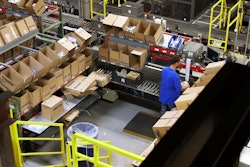In the wake of growing competition in distribution, businesses are being forced to ensure they are remaining productive at all levels in the organization and are maximizing their use of technology to boost profitability. Analyzing the business from top to bottom can be a time-consuming task, but understanding the true cost to serve customers can be the key to maximizing profits and remaining efficient to ultimately protect the bottom line.
Understanding the cost to serve each individual customer account, enables distributors to gather an in depth analysis of how to better improve their business functionality and transactional platforms. In doing so, decision-makers can understand which of their customer accounts are the most and least profitable and which transaction tools or solutions are delivering on expected efficiencies. This is easier said than done as only 15 percent of B2B companies feel they have a comprehensive view of their customers’ activities. When distributors are able to gain a comprehensive overview into their customer accounts, marketing plans and business platforms can be revised for those accounts which are less valuable in order to improve their profitability.
True Meaning of Cost to Serve
Cost to serve is the total cost distributors contribute to serve each customer account, including taking into consideration all overhead costs involved through the purchasing process from initial inquiry to transaction processing. Although customer purchasing channels used by customers can vary from distributor to distributor as well as among customers, it is evident that digital transformation is altering how customers are interacting with the business. US B2B ecommerce alone is expected to grow to $1.2 trillion by 2021.
We are seeing an increase in digital transformation tools being implemented in the workplace, but distributors can’t foresee all exceptions, exemptions or changes to business rules in the transaction process. Distributors must acknowledge that there are costs associated with serving customers such as overhead costs, and exception handling can be a burden to productivity. For example, an EDI customer may not have updated their infrastructure to allow for new fields or product SKUs and the CSR must intercept and reconcile the exception. This causes the sales rep to allot more time to serving the customer using a technology that was meant to increase productivity and efficiency of fulfillment. A cost to serve analysis takes into account these changes and can accurately identify the true cost to serve a customer.
By identifying which customer accounts require a higher cost to serve, businesses can recognize how to most effectively and productively serve their customers who are less valuable and require more assistance from sales representatives in order to allocate resources accordingly. Additionally, when evaluating digital order management solutions, understanding the genuine productivity burdens and gains of a digitization will be at the forefront, instead of a surprise.
Adjusting Strategies
In the wake of growing industry consolidation and competition, businesses must look beyond customer value and analyze what changes need to be implemented in order to improve not only the customer experience, but internal productivity as well. Through conducting a cost to serve analysis, businesses can not only leverage customer information but ultimately improve business strategies to increase revenue and boost profitability.
A cost to serve analysis not only collects and collates data from across the supply chain, but also from channels used by customers to conduct transactions. It should identify all exceptions in the order management process associated with each platform in order to have complete visibility of the cost of transacting with each customer.
Using Technology to Your Advantage
Many distributors are implementing digital solutions in order to increase business productivity but what many often overlook is the impact exceptions can have on business productivity and therefore on profitability.
In order to conduct a successful cost to serve analysis, distributors should be implementing digital solutions to uncover data insights from customer accounts. Once these exceptions are identified, distributors can adjust their business practices accordingly. They may choose to pursue alternative solutions for order management and processing for channels that are less efficient. For example, if the business notices the sales representative is required to intercept incoming purchase orders from an ecommerce platform or portal to handle exceptions on a consistent basis, they may consider implementing a sales order automation tool.
A cost to serve analysis is vital for business success in an increasingly competitive marketplace. With digital tools being implemented in the workplace, it is best for businesses to ensure not only their team, but also their digital tools are operating in the most efficient manner to process transactions and minimize the need for exceptions.
Earl van As is Vice President of Marketing & Product Management of ecmarket, a cloud solutions developer of the patent-pending Conexiom sales order and invoice automation solution. Conexiom allows manufacturers and distributors to focus on serving customers and managing supplier relationships instead of entering data. He may be contacted at [email protected].























